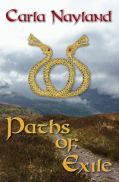An Officer and a Spy, by Robert Harris. Book review
Arrow
2014. ISBN 978-0-09-958088-1. 610 pages.
Set
mainly in France in 1895-1899, this is a retelling in fiction of the infamous
Dreyfus Affair, a notorious miscarriage of justice that saw army officer Alfred
Dreyfus wrongfully imprisoned on Devil’s Island for crimes he had never
committed. All the characters are historical figures.
In
Paris, in January 1895, Major Georges Picquart watches as army officer Alfred
Dreyfus, convicted in a military court of selling secrets to Germany, is
ritually degraded in front of a howling crowd before being sent to life
imprisonment in appalling conditions on Devil’s Island. Picquart’s report on
the event for the Minister of War results in his promotion to Colonel and appointment
as head of the ‘Statistical Section’ – the army’s counter-espionage unit.
Picquart does not want the job, but is determined to do it thoroughly. Soon his
work shows that there is still a spy in the French army trying to sell
classified material to the German embassy. As Picquart follows the threads and
gathers more evidence, he discovers proof that Dreyfus was wrongly convicted
and the real spy is still at large. But his superiors in the army and the
government are far more concerned with covering up their own failings in the
original investigation than in correcting a miscarriage of justice, or even the
protection of their country’s secrets. If Picquart continues his investigation,
the threat is clear – the establishment will close ranks to destroy him as they
destroyed Dreyfus.
An Officer and a Spy is a tense
psychological thriller. The narrative is consistently gripping as events twist
and turn, and the atmosphere of corruption and menace is as all-pervading as
the stink from the Paris sewers. At its heart is the dilemma faced by Picquart,
a man of integrity who finds that the institution to which he has devoted his
life is corrupt at its highest levels. Does he go along with the corruption and
lose his self-respect? Or does he follow
his conscience, try to pursue justice, and lose his career, his position in
society, his livelihood and his freedom, and perhaps also destroy the lives of
people he loves? Many aspects of the Dreyfus Affair have modern parallels, and
this gives the novel a powerful feel of immediacy.
An Officer and a Spy follows the
historical events of the Dreyfus Affair faithfully. The Author’s Note at the
beginning says ‘None of the characters in the pages that follow, even the most
minor, is wholly fictional, and almost all of what occurs, at least in some
form, actually happened in real life’. Although I had vaguely heard of the
Dreyfus Affair before reading An Officer
and a Spy, it was mostly in the context of Emile Zola’s famous
‘J’accuse...!’ letter. I had never heard of Georges Picquart before, even
though it seems that Picquart was the key figure – Zola’s letter essentially
gave a push to a something that Picquart had already begun, and without
Picquart’s testimony the truth would never have come to light. I also had not realised
the discrepancy between the original offence – the ‘secrets’ for which Dreyfus
was wrongly imprisoned in such inhuman conditions were actually rather minor –
and the astonishing scale of the cover-up.
An Officer and a Spy does a masterly
job of shaping a complex sequence of events and reversals over several years
into a coherent narrative whose pace never flags. It is recounted throughout in
first-person present tense by Picquart, whose character is key to the whole
novel. Picquart as portrayed here is an admirable character, driven not by any
particular sentiment or regard for Dreyfus, nor even (at least initially) by
any high-flown ideals of truth and justice, but by a steady professional
determination to do his job thoroughly and honestly (and later, also by a
desire for revenge on the army for their treatment of a woman he cares for).
The other characters are deftly drawn with a few bold strokes, so that even
though there is not much demographic diversity in the cast – they are almost
all middle-aged Frenchmen and most of them are army officers – they emerge as
distinct individuals. I am afraid that most of the army does not come out of
the novel with much credit (except General Leclerc, provincial commander in
North Africa) but being on the wrong side of the narrative does not prevent
them being portrayed with sympathy and understanding, particularly Picquart’s
adversary Major Henry.
The
writing style is clear and unfussy, and the 600-odd pages pass effortlessly. I
normally dislike present-tense narratives, but it is a testament to the quality
of the writing that after a few pages I had ceased to notice it.
Taut,
gripping thriller retelling the Dreyfus Affair, carried by the admirable
central character and with a disturbing number of modern parallels.


